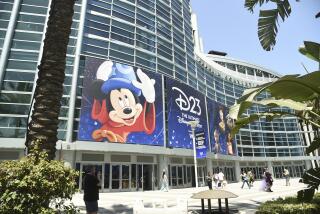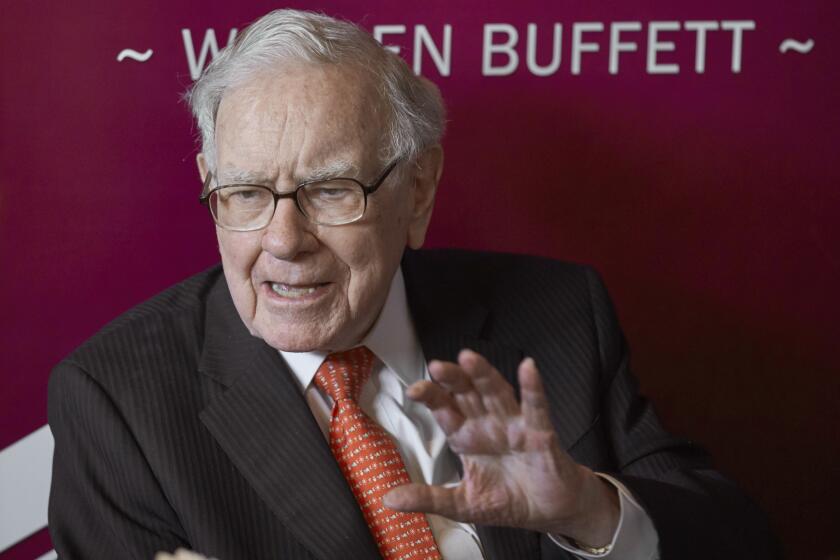SeaWorld attendance drops sharply, but CEO says San Diego outlook improving
- Share via
Attendance at SeaWorld Entertainment parks dropped sharply during the second quarter, driven largely by much lower visitation at its Florida locations, while persistent revenue declines in San Diego are starting to slow, the company reported Thursday.
Across its 12 parks, SeaWorld saw 494,000 fewer guests during the start of the crucial summer season, causing attendance to fall 7.6% to 5.98 million visitors. The company blamed much of the decline on far fewer tourists from Latin America and a shift in the timing of the Easter and Memorial Day holidays.
While overall revenue fell 5% to $371.1 million for the quarter and the outlook for the remainder of the year has been adjusted downward, the company said the financial picture for its California and Texas parks is showing some signs of improvement.
Recent efforts to rehabilitate SeaWorld’s image following years of criticism of how it treats its killer whales appears to be paying dividends in San Diego, where sharp revenue dropoffs have started to subside, said CEO Joel Manby.
“In California, we’ve gone from minus 13% two years ago, minus 8% year to date last year and now we’re only at minus 2% and frankly, we have no large attraction this year,” Manby said during a Thursday morning earnings call. “...We are seeing very strong indications in California that our brand issues are abating. I anticipate California growing next year for the first time in three years.”
Still, the focus remained on lackluster performance at the Florida parks, where SeaWorld was hit hard by a falloff in visitors from financially troubled Brazil -- a continuation of a trend noted in the first quarter and one that shows no signs of abating.
“While implementation of our plan through the first half of 2016 is delivering early indications of progress outside of Florida, second quarter overall was below expectations we shared in May, primarily due to an accelerated decline in Latin American guests at our Florida park locations, an overall downturn in the Orlando [Fla.] market in the latter half of June, and the impact of Tropical Storm Colin,” Manby said. “Latin American attendance is down approximately 40%, or 235,000 guests year-to-date,”
SeaWorld reported overall net earnings of $17.8 million for the second quarter ending June 30, or 21 cents a share, in line with some analysts’ expectations. That’s up from $5.8 million a year earlier. Adjusted earnings before interest, taxes, depreciation and amortization (EBITDA) was $83.8 million, a decrease of $16.4 million, or 16%, compared to $100.2 million for the second quarter of 2015. Analysts had expected a figure closer to $91 million.
In its latest report, SeaWorld has now lowered its expectations for the remainder of the year, forecasting an adjusted EBITDA of between $310 million and $340 million. That compares to its expectation in May of $335 million to $365 million.
“It’s not pretty,” said James Hardiman, an analyst with Wedbush Securities. “We assumed trends would get better toward the end of the quarter given the new rides coming on line, although things did get better in July, but to bring their numbers down that significantly after two months is pretty disappointing.”
The company has taken a number of steps this year in hopes of turning around public sentiment and slumping attendance at its marine parks in the wake of still-lingering criticism of its treatment of killer whales.
In March, the company announced it would end the breeding of its killer whale population, and it forged a partnership with a longtime foe the Humane Society. It also said it would phase out its signature Shamu shows at all three marine parks. San Diego will be the first to debut next year a new orca encounter that will replace theatrics with the whales’ natural behaviors in the wild.
SeaWorld also has discarded plans for a $100-million expansion of its orca tanks in San Diego and just last week dropped a lawsuit against the California Coastal Commission that challenged the agency’s right to impose a ban on the breeding of killer whales at the theme park. The restriction was a condition imposed on SeaWorld in October when the state agency approved the tank expansion.
“The commentary they gave on California was encouraging, especially against the backdrop of the Harry Potter attraction that opened at Universal in Southern California,” Hardiman said. “SeaWorld San Diego has really been at the epicenter of the brand issue, and so while it’s probably a bit too early to call a victory, mission accomplished, at least we appear to be approaching a bottom, which is generally good news.”
Although noting that it has seen an overall downturn in the Orlando market, SeaWorld said on Thursday that July monthly total attendance for its parks was up 4% year-over-year, due in part to the opening of two new attractions in June -- Mako at SeaWorld Orlando and Cobra’s Curse at Busch Gardens Tampa Bay, Fla.
Weisberg writes for the San Diego Union-Tribune.
More to Read
Inside the business of entertainment
The Wide Shot brings you news, analysis and insights on everything from streaming wars to production — and what it all means for the future.
You may occasionally receive promotional content from the Los Angeles Times.










